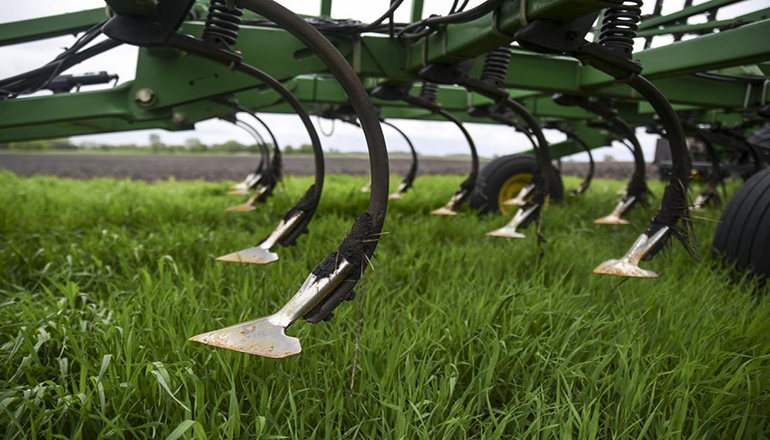Farmers and ranchers face unique safety risks as COVID-19 continues to spread.
The predicted peak of the COVID-19 outbreak likely will hit as spring planting season shifts into high gear, says Rusty Lee, University of Missouri Extension field specialist in agronomy.
Physical distancing becomes difficult as farmers receive seed and chemical deliveries, Lee says.
Shipments of seed bags and chemical containers arrive on trucks that have been to other farms. This could spell trouble if precautions are not taken, he says. The National Institutes of Health reports that the virus can survive up to three days on plastic and stainless steel surfaces and up to 24 hours on paper surfaces.
Limit traffic in and out of the farm, Lee says. Ask to be there when delivery trucks arrive. Maintain a 6-foot distance from the delivery person.
On many farms, delivery people use the farmer’s tractors or forklifts to unload supplies. To reduce the risk of virus spread, Lee recommends that no one other than the farmer operate the equipment. “This creates additional planning and work for the farmer, but it reduces the risk of transferring the virus as one person hops off and another hops on equipment,” he says.
Keep sanitizing supplies in commonly used areas such as tractor cabs and sheds. Wipe down doorknobs, steering wheels, radio knobs, grab handles, fuel tank covers and other surfaces people might touch.
Lee also suggests farmers change how they communicate during this crisis. “The telephone, email and your tablet are your friends,” he says. “Use technology to communicate.”
This includes texting work plans to employees instead of holding morning meetings in the shed or at the kitchen table. It also means using a phone or tablet to take a picture of a broken part to send to the parts dealer. Call ahead to make sure parts are in stock and ask the dealer to place the part outside the door.
Farms also face special risks because up to three generations of one family may still actively work on the farm. “Your brother, sister, brother-in-law, cousin and grandfather might be part of the family farm operation,” Lee says. “Mealtimes and child care might include Grandma and Grandpa.”
Even within families, maintain safe practices such as distancing. Wipe down surfaces frequently and try to minimize contacts. Also, consider how to safely handle “field food” and other meals during planting season.
Lee advises farmers to develop a written contingency plan in case of illness of the farmer, family members or workers. Decide who can fill vital roles and share this plan with those involved. Safety should be a priority for all who enter and leave the farm, he says. Set and follow protocols.
Maintain equipment, but also take care of your health, he says. “You are your farm and family’s most important asset.”







